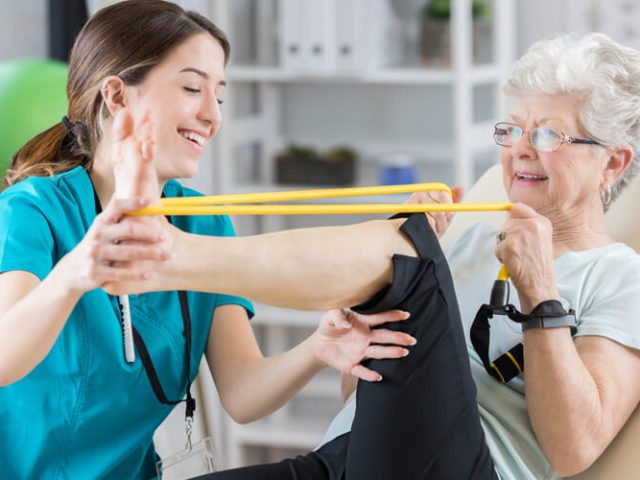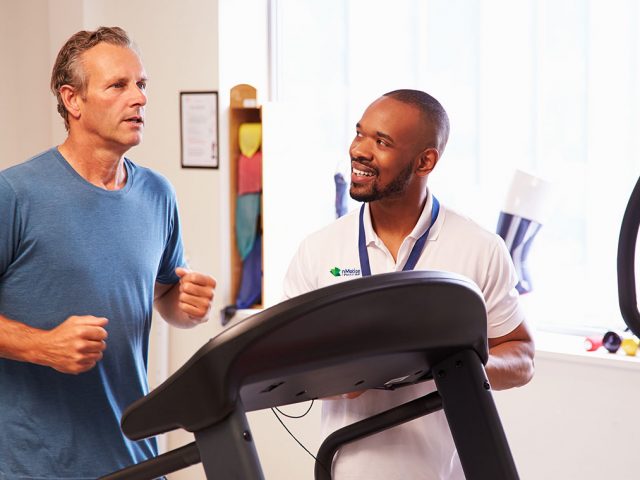
In today’s fast-paced world, many people are turning to DIY solutions to manage their health, including physical therapy. While professional guidance is crucial for certain conditions, many individuals can benefit from safely incorporating physical therapy exercises into their home routines. Whether you’re recovering from an injury, managing chronic pain, or simply looking to improve your mobility, doing exercises at home can be a practical and effective approach. Here’s a comprehensive guide to help you navigate DIY physical therapy with a focus on safe and beneficial exercises you can do at home.
Understanding DIY Physical Therapy
DIY physical therapy involves performing exercises and stretches independently, often based on guidelines provided by a healthcare professional. While this approach can be empowering, it’s essential to approach it with caution. Self-directed physical therapy is not a substitute for professional care but can complement it by maintaining and enhancing the progress made in therapy. Visit their page if you need more information or have any questions about physical therapy for pain.
Before starting any DIY physical therapy program, it’s wise to consult with a healthcare provider, especially if you have an existing medical condition or recent injury. They can provide specific recommendations tailored to your needs and ensure you’re using the correct techniques.
Key Principles for Safe Home Exercises
- Start Slowly: Begin with exercises that match your current fitness level and gradually increase intensity. Overexerting yourself can lead to injury.
- Focus on Form: Proper technique is crucial. Performing exercises incorrectly can exacerbate existing issues or create new ones. If possible, use video demonstrations from reputable sources or consult with a professional to learn the correct form.
- Listen to Your Body: Pay attention to how your body responds. Mild discomfort is normal, but sharp pain or significant discomfort is a red flag that you should stop the exercise and seek advice.
- Warm Up and Cool Down: Always start with a warm-up to prepare your muscles and joints for activity. Similarly, end your session with a cool-down to help your body recover.
- Consistency Over Intensity: Regular, moderate exercise is often more beneficial and sustainable than sporadic, intense sessions.

Safe Exercises to Try at Home
Here are some safe and effective exercises you can perform at home to improve strength, flexibility, and mobility. These exercises are generally suitable for a variety of conditions, but they should be adapted to your specific needs.
1. Seated Marches
Benefits: Improves circulation, strengthens the lower body, and enhances balance.
How to Do It:
- Sit on a sturdy chair with your feet flat on the floor and your back straight.
- Lift one knee as high as comfortable, then lower it back to the floor.
- Alternate legs, lifting one knee at a time.
- Perform 10-15 repetitions on each leg.
2. Wall Angels
Benefits: Enhances shoulder mobility and helps with posture.
How to Do It:
- Stand with your back against a wall, feet about 6 inches away from it.
- Press your lower back, upper back, and head against the wall.
- Raise your arms to form a “W” shape with your elbows bent.
- Slowly move your arms upward to form a “Y” shape, then lower them back to the “W” position.
- Perform 10-15 repetitions.
3. Bird Dog
Benefits: Strengthens the core and improves balance.
How to Do It:
- Start on your hands and knees, with your wrists aligned under your shoulders and knees under your hips.
- Extend one arm forward while simultaneously extending the opposite leg back.
- Hold for a few seconds, then return to the starting position.
- Repeat on the other side.
- Perform 10-15 repetitions on each side.
4. Glute Bridges
Benefits: Strengthens the glutes, lower back, and core.
How to Do It:
- Lie on your back with your knees bent and feet flat on the floor.
- Place your arms at your sides with palms facing down.
- Lift your hips towards the ceiling, squeezing your glutes at the top.
- Lower your hips back down to the floor.
- Perform 10-15 repetitions.
5. Standing Calf Raises
Benefits: Strengthens the calves and improves ankle stability.
How to Do It:
- Stand with your feet hip-width apart and hold onto a chair or wall for balance if needed.
- Slowly lift your heels off the ground, rising onto the balls of your feet.
- Hold for a few seconds, then lower your heels back down.
- Perform 10-15 repetitions.
6. Cat-Cow Stretch
Benefits: Increases spine flexibility and reduces lower back stiffness.
How to Do It:
- Start on your hands and knees with your wrists under your shoulders and knees under your hips.
- Inhale and arch your back, lifting your head and tailbone towards the ceiling (Cow Pose).
- Exhale and round your spine, tucking your chin to your chest (Cat Pose).
- Repeat the sequence 10-15 times.
Tips for Maximizing Your DIY Physical Therapy
- Track Your Progress: Keep a journal of your exercises, noting how you feel before and after each session. This will help you track improvements and adjust your routine as needed.
- Incorporate Variety: Mix different exercises to target various muscle groups and prevent boredom. This also helps to ensure balanced strength and flexibility.
- Stay Hydrated and Nourished: Proper hydration and nutrition support muscle function and recovery, so drink plenty of water and eat a balanced diet.
- Use Quality Equipment: If using resistance bands or other tools, ensure they are of good quality and suited to your exercises.
Conclusion
DIY physical therapy can be a valuable addition to your health and wellness routine, offering the flexibility to exercise at home while managing your recovery or maintaining mobility. By following the principles of safety and focusing on proper technique, you can effectively incorporate these exercises into your daily life. Always remember to consult with a healthcare provider before starting any new exercise program, especially if you have specific health concerns or conditions. With patience and consistency, DIY physical therapy can help you achieve your health goals and improve your overall quality of life.
